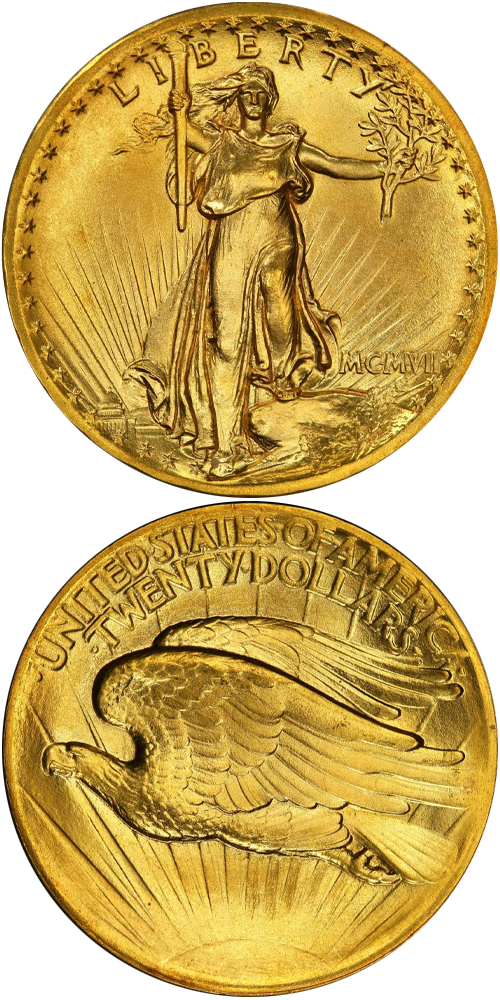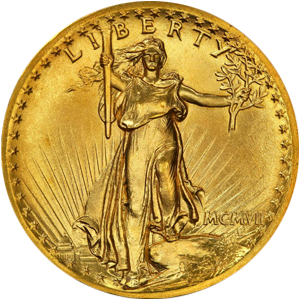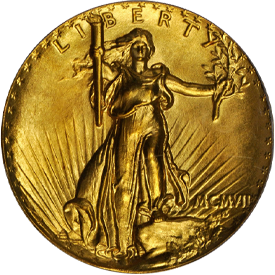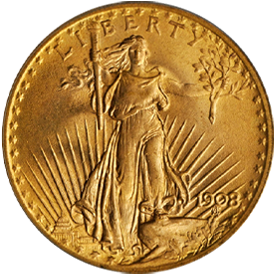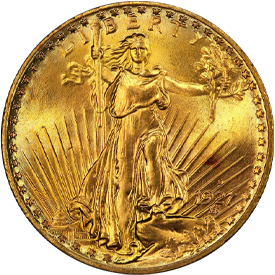Theodore Roosevelt’s desire for more artistic designs on our coinage was manifested in its highest form on the attractive double eagle designed by Augustus Saint-Gaudens. The obverse portrayed the figure of Liberty striding forward, holding a torch in her right hand and an olive branch in her left. The reverse showed a majestic eagle in flight. So popular was the obverse design, that it was selected for the American Gold Eagle Bullion coin in 1986, which continues to this day.
Making its debut in 1907, the first run of approximately 12,400 pieces were struck in high relief, appearing almost medallic in appearance. The date was shown in Roman numerals (MCMVII) and the overall effect was visually stunning. However, striking and stacking issues lead to a flattening of the entire relief and later issues that year were made using this lowered relief. We should note as well that a few pattern pieces in Ultra High Relief were also made, but these are major rarities well into seven-figures.
Coins made during 1907 and the first part of 1908 do not show the motto “IN GOD WE TRUST” on the reverse, above the sun at the bottom. The motto was added later in 1908, and the coin continued unchanged from that point until the end of production in 1933.
Most of the earlier dates (1907-1916) are relatively available, but after 1916, things get a bit more difficult. There are two prohibitively rare dates; the 1927-D and of course the 1933. Other extremely tough dates include the 1920-S, 1921, 1926-D, 1927-S as well as all other issues after 1928. While some of these later dates had generous mintages, nearly all were held by the government and melted.
Today, like the later $20 Liberties, many double eagles of this type (nicknamed “Saints”) are held by investors seeking to invest in gold bullion. All of the Philadelphia issues from 1907 through 1928 (with the exception of 1921) are relatively common, and are available in quantity on the market.
